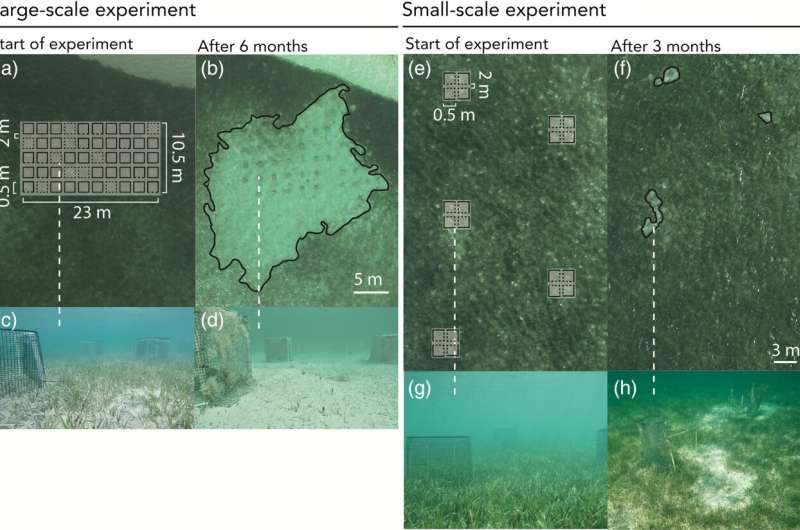Mapping the 'landscape of fear' of sea turtles in the Bahamas

Many sea turtles live their adult lives in predator-free environments due to overfishing of their main predator, the tiger shark. Because of this, it is largely unknown how sharks impact turtle grazing behavior. Wageningen researchers have discovered how turtles change their grazing behavior when they feel safe, and as a result increase their grazing pressure on seagrass meadows.
The "landscape of fear" is an established concept on land, where for instance the presence of wolves influences the risk-avoiding behavior of deer. This can result in variation in plant abundance and diversity and prevent overgrazing of plants. In the marine environment, it is challenging to detect and map such a landscape of fear, because of the high mobility of large animals in the ocean and unknown cues between predators and prey.
Researchers of Wageningen University & Research together with Florida International University and the Centre for Ocean Research and Education in The Bahamas have recently published a paper in the journal Ecology on a field study in the Bahamas. It describes that sea turtles had a vigilant grazing strategy and spread themselves out over the lush seagrass meadows. This was most likely because of the high densities of predators—large sharks—reported in this area, having an impact on turtle movements and behavior.
Turtles shape the underwater landscape
"We confirmed our hypothesis by adding structures to the seagrass habitat in The Bahamas, and found that turtles quickly moved to the area where they had lots of hiding places," says Fee Smulders, a Ph.D. candidate at Wageningen University and lead investigator of this study.
"As a result, turtle density increased, and the turtles switched to an intensive grazing strategy which led to patches with heavily grazed seagrass. These results reveal that turtles select foraging areas based on habitat complexity, thereby shaping the underwater landscape. Additionally, our results imply that when turtles feel safe, the impact on the seagrass is much larger than when they feel unsafe," according to Smulders.
Follow-up experiments are needed to disentangle shark hunting strategy and turtle risk perception with regard to their environment. The current study however already adds to the evidence that sharks can increase the resilience of seagrass meadows through fear effects.
Seagrass is very valuable to humans, as it provides a home for a wide variety of fish and other species that are commercially important. Seagrass can also help to combat climate change. It protects our coasts by reducing wave energy and can store large amounts of carbon dioxide in the ocean floor at a higher rate than tropical forests.
Protect not only prey animals, but also their habitat and predators
To conserve these valuable ecosystems, the researchers suggest protecting more than one component of the seagrass habitat. "If we only protect the sea turtles and not the sharks or their habitat, we may lose the seagrass in time and with it the most important food source of the sea turtles," says Marjolijn Christianen, senior author and Associate Professor at Wageningen University.
"If we want to ensure plenty of food for sea turtles in the future and not lose valuable seagrass habitat, we have to protect the seagrass and the turtles, together with their predators, the tiger shark. This will ensure a more balanced ecosystem in the long-term."
More information: F. O. H. Smulders et al, Green turtles shape the seascape through grazing patch formation around habitat features: Experimental evidence, Ecology (2022). DOI: 10.1002/ecy.3902
Journal information: Ecology
Provided by Wageningen University




















